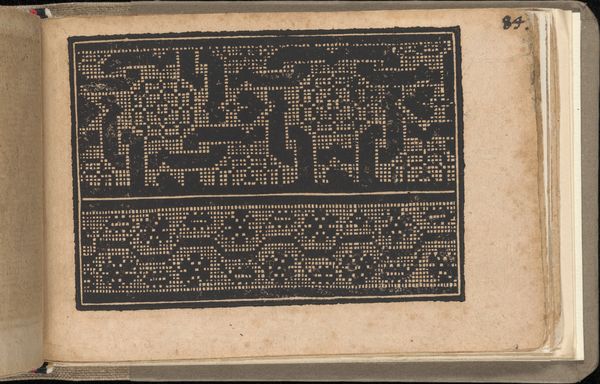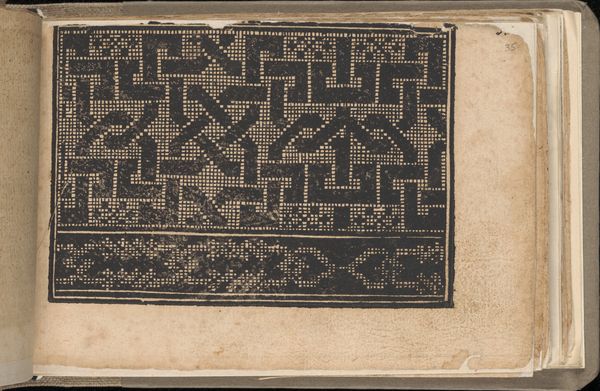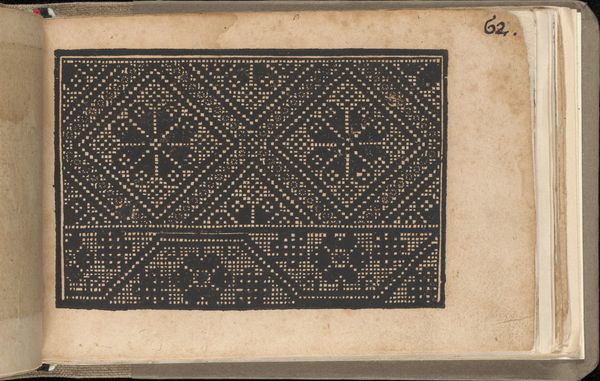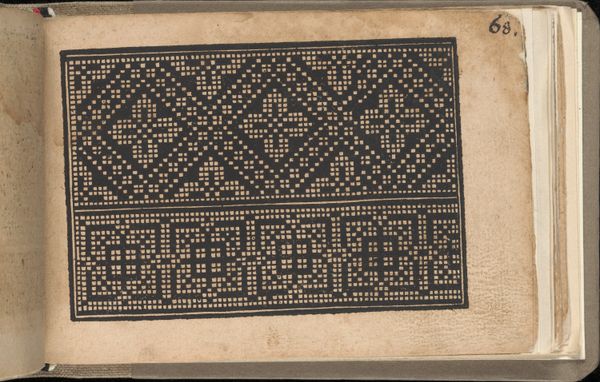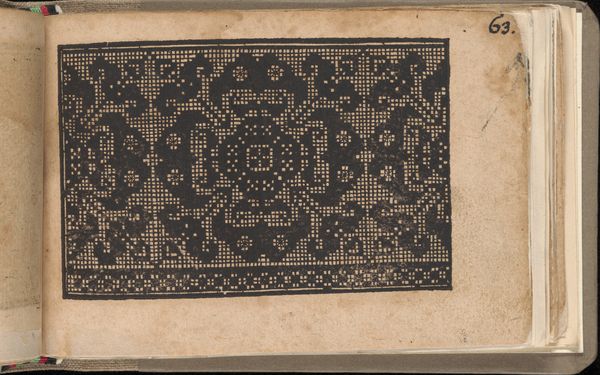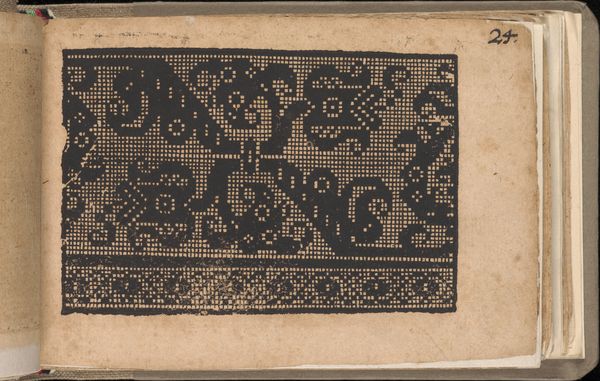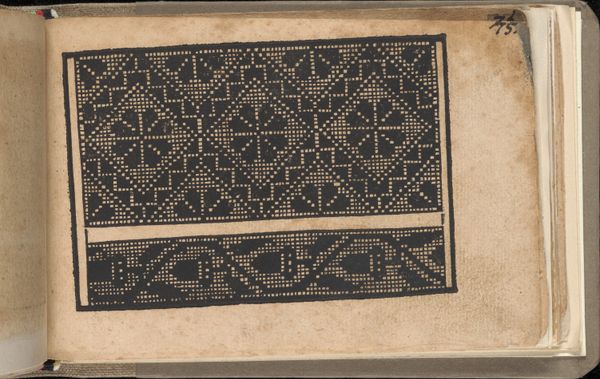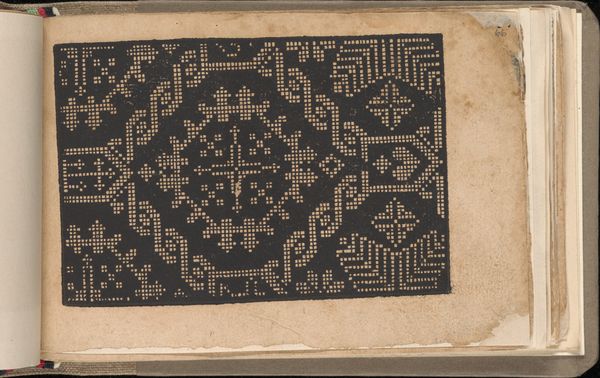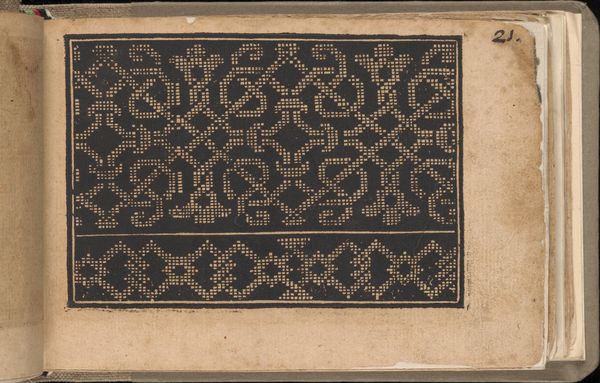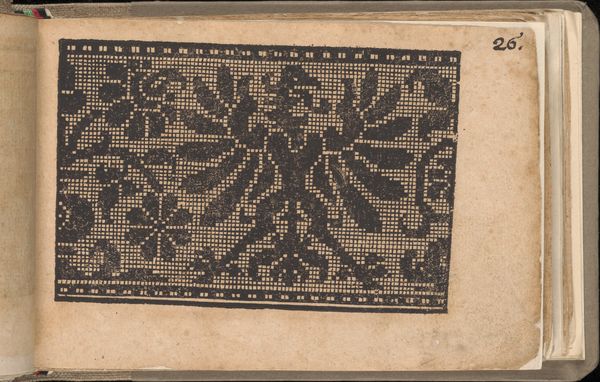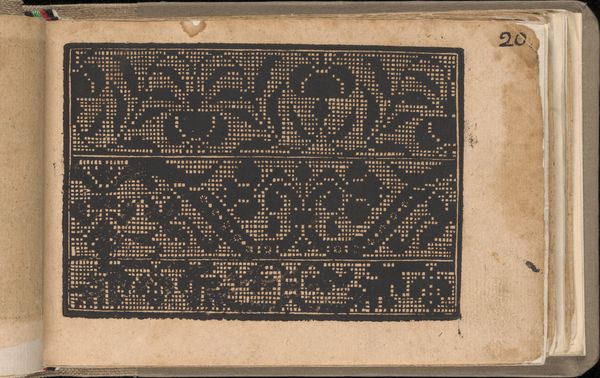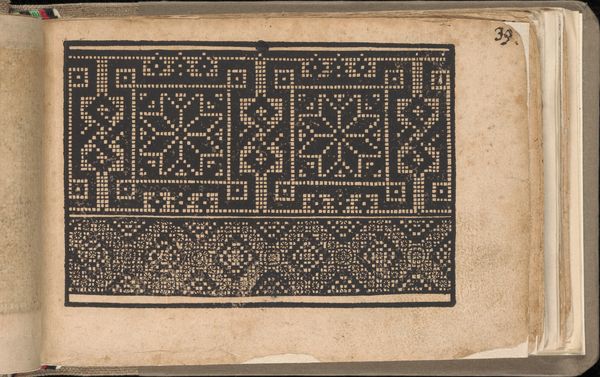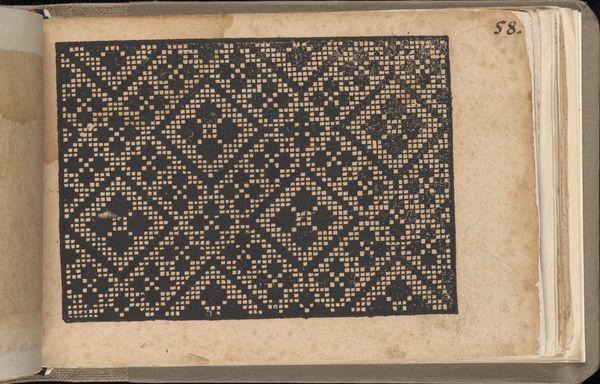
drawing, ornament, print, paper, woodblock-print
#
drawing
#
aged paper
#
ornament
#
toned paper
# print
#
book
#
pattern
#
paper texture
#
paper
#
woodblock-print
#
geometric
Dimensions: Overall: 4 1/2 x 6 11/16 in. (11.5 x 17 cm)
Copyright: Public Domain
Curator: What strikes me first is the paper itself; you can almost feel the texture of it just by looking at it. It gives such a sense of antiquity. Editor: Indeed. What we are looking at here is page 45r from the "Schön newes Modelbuch," or "Beautiful New Pattern Book," created in 1608 by Sigismundus Latomus. It’s a woodblock print on paper and currently resides at The Metropolitan Museum of Art. These books were, essentially, the Instagram of the 17th century for needleworkers! Curator: Oh, fascinating. I see geometric patterns. Squares, diamonds, rendered in a very specific style. What do you read into those forms? Editor: The geometry is so precise, rigid even, yet something about it still speaks to a sense of harmony and balance. These weren’t simply decorative motifs. They carry the symbolic weight of order in a chaotic world; domesticity, certainly; perhaps even protection against ill fortune in the minds of those stitching them into clothing or linens. Curator: You're right. The symmetry, in its cultural context, is reassuring. The "Modelbuch" was very much part of the burgeoning print culture and fashion revolution that shaped the aspirations of those in the middling ranks of society at the time. They desired the sartorial elegance displayed by elites. The books provided a form of cultural instruction. Editor: And you can imagine the artisan or household member poring over the design, adapting it to their own vision, imbued as they were by shared cultural imagery. These motifs connect them, across time. I would be curious to look at how motifs in different cultures evolve—especially ones using textiles. Curator: And the choices behind that process become part of the object’s social and personal biography. It stops simply being fabric, becoming cultural expression. I'd love to compare it to contemporary uses of design. Editor: Me too! Looking at this piece, I appreciate the deep roots of seemingly simple patterns and how powerful they can be as reflections of history and imagination.
Comments
No comments
Be the first to comment and join the conversation on the ultimate creative platform.
